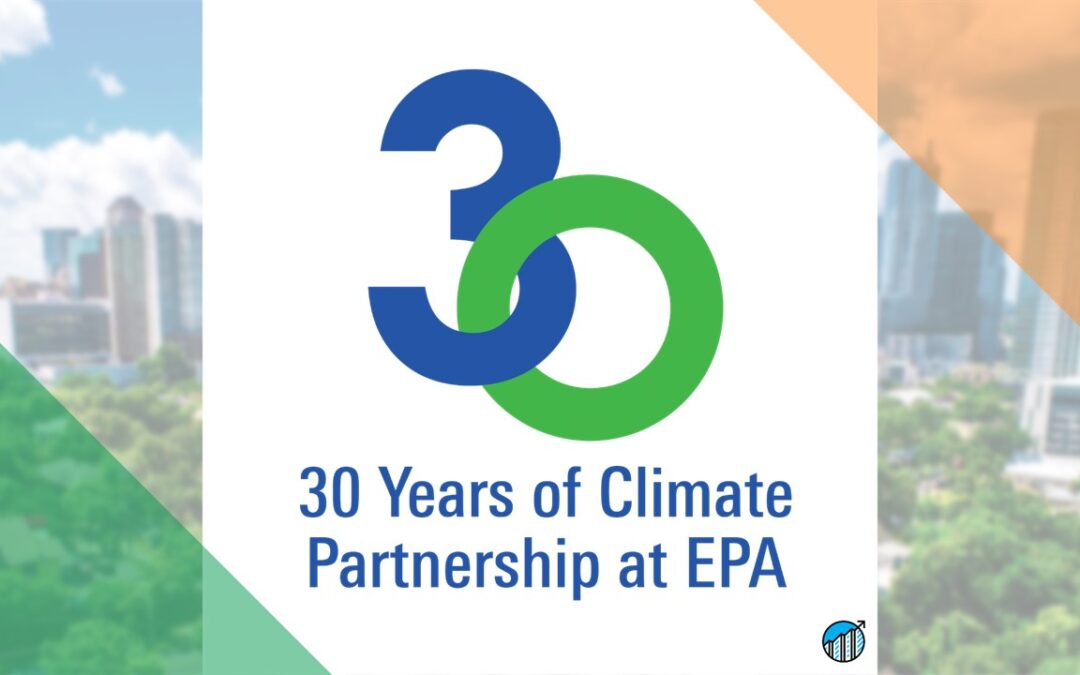
Aug 26, 2021 | Articles, Homepage
Dear Partners:
2021 marks a milestone celebration.
It was 30 years ago that an innovative idea took hold with the advent of the U.S. Environmental Protection Agency’s (EPA’s) Climate Partnership Programs. These voluntary programs serve to broaden and diversify the EPA’s climate approach—working hand-in-hand with private sector organizations and others to achieve more than would be possible through federal regulations alone.
As an ENERGY STAR supporter, Corporate Sustainability Strategies (CSS) invites you to join the celebration and to help spread the word about the cumulative impacts of the EPA’s Climate Partnership Programs.
Impact At-a-Glance
- More than 6 billion metric tons of greenhouse gas emissions have been prevented from entering our atmosphere
- American consumers and businesses have saved more than $500 billion.
- These programs drove reductions equivalent to 8% of total U.S. greenhouse gas emissions in 2019 alone.
Market Share and Impact on Commercial Real Estate
- Thousands of organizations, including 40% of Fortune 500 and 33 industrial sectors, partner with EPA to help advance energy efficiency.
- More than 270,000 commercial buildings (representing more than 25% of all commercial floor space in the U.S.) actively benchmarking energy use in ENERGY STAR Portfolio Manager to measure, track, and improve their energy performance.
- Compared to typical buildings, ENERGY STAR certified buildings drive investment in energy efficiency.
- Average Sale Price = up to 31% more
- Average Rental Rate = up to 16% more
At CSS, we know the business case for sustainability, and we believe in doing well by doing good.
It’s important to share how businesses, organizations, and communities are impacting climate change. We appreciate your dedication and continued partnership to strengthen our economies while improving lives and our planet.
Sincerely,
Brenna Walraven, BOMA Fellow, BOMI-HP®, CPM®, RPA®
President & CEO
Corporate Sustainability Strategies
Efficiency Pays. Always Has. Always Will.
Join EPA’s 30th Anniversary Celebration
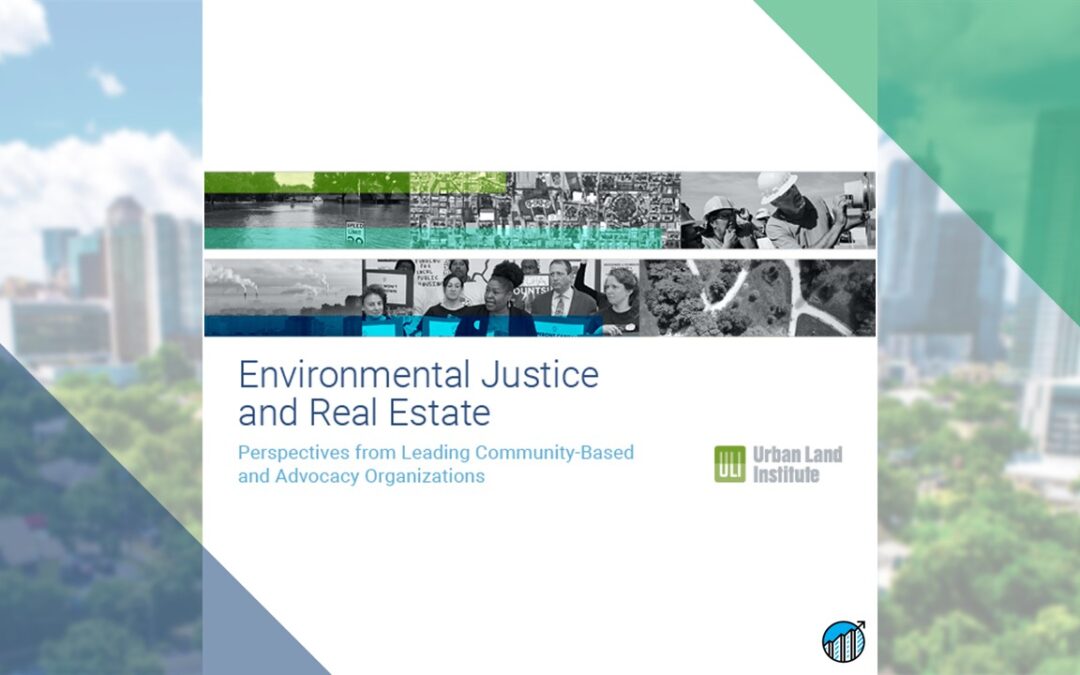
Aug 23, 2021 | Articles, Homepage
Environmental Justice and Real Estate: Perspectives from Leading Community-Based and Advocacy Organizations, a new publication released by the Urban Land Institute (ULI), explores the environmental justice movement and highlights the role real estate can play in contributing to sustainable, resilient, and equitable development, particularly through engagement and partnership with community organizations. Low-income communities and communities of color who contribute the least to environmental crises are often most at risk from climate or environmental hazards.
This publication features four interviews with community and advocacy organizations and thought pieces by ULI members that collectively provide insight into how real estate actors can support collaborative solutions and equitable built environments for all.
Read the full report on ULI’s Knowledge Finder.
About Urban Land Institute
ULI is a global, member-driven organization comprising more than 45,000 real estate and urban development professionals dedicated to advancing the Institute’s mission of shaping the future of the built environment for transformative impact in communities worldwide. ULI’s interdisciplinary
membership represents all aspects of the industry, including developers, property owners, investors, architects, urban planners, public officials, real estate brokers, appraisers, attorneys, engineers, financiers, and academics. Established in 1936, the Institute has a presence in the Americas, Europe, and the Asia Pacific region, with members in 80 countries.
Learn More
ULI’s Center for Sustainability and Economic Performance
ULI’s Urban Resilience Program
ULI’s Greenprint Center for Building Performance

Apr 23, 2021 | Articles, Homepage
by Brenna Walraven, BOMA Fellow, CPM, RPA, and Simon Turner
Evidence of humankind’s long-standing battle against infectious diseases traces back thousands of years. There have been about 20 known pandemics in recorded history, and in some instances, they have led to an enhanced understanding of health and wellness issues and better approaches for safely navigating the world. The cholera epidemic that struck London in the mid-nineteenth century, for example, famously led to reforms in public water and sanitation systems. A decades-long campaign to distribute and socialize the use of mosquito nets has curtailed malaria. SARS, H1N1 and MERS were throttled by sophisticated pandemic control, including rapid behavioral changes, such as mask-wearing. Over the past 150 years, both the science of epidemiology and acceptance of disease control as a societal responsibility have come of age. Now more than ever, it’s clear that modern buildings must also contribute to life safety and health in the workplace.
As we prepare for a post-COVID-19 world, what practices will survive to confront pandemic preparedness in the future? Much has been written about remote work being here to stay, but the commercial real estate industry is banking on a basic human need for connection. The human species has evolved to congregate, and businesses know that ideas spring from being together, as in-person interactions spark creative thinking. It would be unwise to write off the office, but wise to reimagine its format.
Post-pandemic best practices will favor workplaces that create more space, higher ventilation rates—potentially even double the current ASHRAE minimums—and focus on how air is moved around buildings. Other changes will include open spaces, displacement ventilation, connections to the outside (both physically and via views), better lighting, more inviting stairwells, less reliance on elevators and more walkable spaces. For high-rise buildings, new elevator technology with vertical airflows and lower occupant density seems a sure bet, as is more touchless technology.
We can expect investments in buildings to respond to a market demand not just for COVID-free spaces, but healthier and more productive spaces. There is a great deal of research linking the factors that generate health and productivity in the workplace to substantial “bottom line” figures. Business owners are already familiar with utilizing financial analysis to make decisions, such as which space to lease. If building owners, property managers and leasing teams can discuss health-related features in these terms, they are likely to find a receptive audience.
The Fundamental Six
Listed below are six categories that are poised for growth in the post-pandemic workplace and what they mean for property professionals and tenants alike:
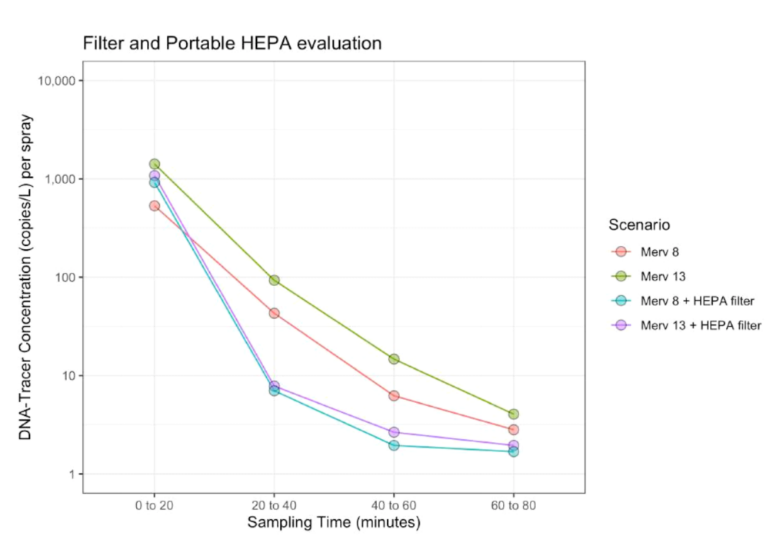
Releasing DNA-tracer virus surrogates into indoor air showed little impact from upgrading main filters—but significant improvements with standalone room filters. (Graph provided by SafeTraces™)
Indoor Air Quality
Indoor air quality (IAQ) is one of the leading building wellness buzzwords today—and for good reason. Tuning indoor air for the appropriate work environment creates one of the greatest opportunities for supporting both the cognitive and physical health of occupants, with an especially strong level of confidence.
Consensus is that ventilation is critical in the spread of the novel coronavirus. Physical barriers (i.e. masks) work because COVID-19 is spread via aerosols and droplets. It seems that wiping down surfaces might make occupants feel more comfortable—and that’s important, too—but contaminated surfaces, or fomites, are not the primary vector to worry about during this current pandemic.
While the science is still developing, studies are also emerging that indicate there may be little point in upgrading main filters beyond the MERV 11-13 range or using special technologies at the air handlers if your goal is to reduce viral numbers in the air traveling through the building. It is difficult for viral particles emitted by someone in a building to successfully travel to another room. Those particles will be:
-
- Mixed with and diluted by the immediate room air;
- Passed through the return system, diluted by all the other return air;
- Mixed with and diluted by outside air;
- Filtered twice, by media and then by wet cooling coils trapping and draining particles to condensate;
- Ejected through the supply fan;
- Divided at every junction in the supply duct system; and
- Exposed to another occupant for a fraction of a second as they walk through any remaining viral particles left in their breathing zone.
This should make building managers think twice before investing in expensive upgrades at their main air handlers, especially if they are already equipped with filters in the MERV 11-13 range.
Lighting and Views
Human beings evolved outdoors, in contact with nature, but today, we spend the vast majority of our time indoors. Generally speaking, people respond positively to light and green views. There is early research showing strong cognitive benefits of biophilia (connecting manmade environments to nature) and views to the outside. Having a window in the workplace has been shown to generate a six percent improvement in productivity. Circadian lighting (matching indoor light temperatures to the time of day) has shown significant sleep quality benefits and, in schools, double-digit increase in standardized test scores.
Thermal Comfort
Personalized thermal comfort has long been associated with productivity improvements. Building occupants may be growing less tolerant of fixed temperatures in their workplaces, and we will see a growing demand for adjustability in thermal environments. It is difficult to micromanage temperature to the individual level (versus room, suite or floor level), but temperatures in the low 70s Fahrenheit seems to produce the most productive workforce.
Noise and Sound
Productivity is eroded dramatically when we try to process multiple conversations. In the post-pandemic office, property professionals can expect tenant demands to include better control of distractions and interference, and a desire for variability depending on the worker and task at hand. Some tasks (and people) favor a high-energy space, but others require peace and quiet. This is a strong productivity factor that employers and their landlords should prioritize.
Active Design
The expectation that people should park themselves at a single workstation for the day may be a thing of the past. It is natural for people to seek variability in their workplaces depending on their moods, needs and type of work—and there are extended benefits of having access to movement and physical activity, even if only briefly. Future workplaces will provide more freedom to move, circulate and exercise.
Personal Fitness and Health
The pandemic has made people more aware of their own personal health and the impact of their surroundings. Products, services and training that address personal health will be in demand. Key factors for personal health include stress management, sleep hygiene, hydration, nutrition, exercise and resilience to infection and disease. Employers, property professionals and workspaces that support these needs can drive better outcomes for occupants, leading to enhanced satisfaction levels and improved tenant retention.
Running the Numbers
All of these elements offer potential productivity benefits to businesses, which can significantly improve their bottom lines. Science already exists to quantify these benefits. (Click here for a chart that provides an overview, courtesy of Simon Turner and Building Cognition LLC.)
While individual building results may vary, research shows the following potential for productivity gains from these elements:
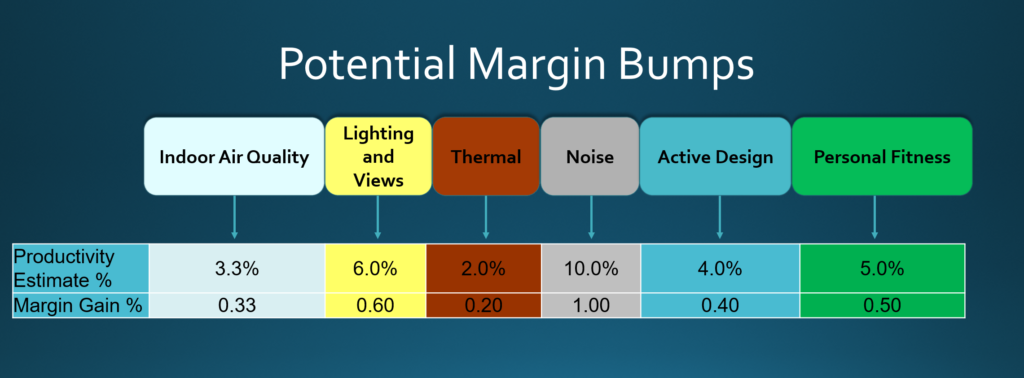
Margin gain assumption: Existing 10% margin (Courtesy: Simon Turner, Building Cognition LLC)
The exact impact for tenants will depend on the building’s environmental baseline: the existing ventilation rates, architectural details and—to a large extent—the existing tenant culture. By assessing potential for improved productivity, adapting the building’s appeal in key areas and marketing the correlation between productivity and margin gains to prospective tenants, commercial buildings can be much more attractive destinations. Done successfully, the building operator will become a true partner and trusted real estate advisor for the tenant.
Opportunity Awaits
There is great opportunity waiting on the other side of the COVID-19 pandemic. Owners and managers of commercial properties—and tenant decision makers—can emerge wiser, more educated and more technically adept at tackling the spread of disease. It all comes down to building management policies that prioritize ventilation, lighting, workplace choices and a culture of health and wellness. Property professionals and tenants should take a cue from recent events to implement fundamental building optimization practices that enable a healthier, more productive and more resilient workplace experience.
About the Authors
Brenna Walraven is the president & CEO of Corporate Sustainability Strategies, Inc. She also is a past chair of BOMA International. Simon Turner is the founder of Building Cognition LLC and a BOMA Life Member.
Original article posted at BOMA International.
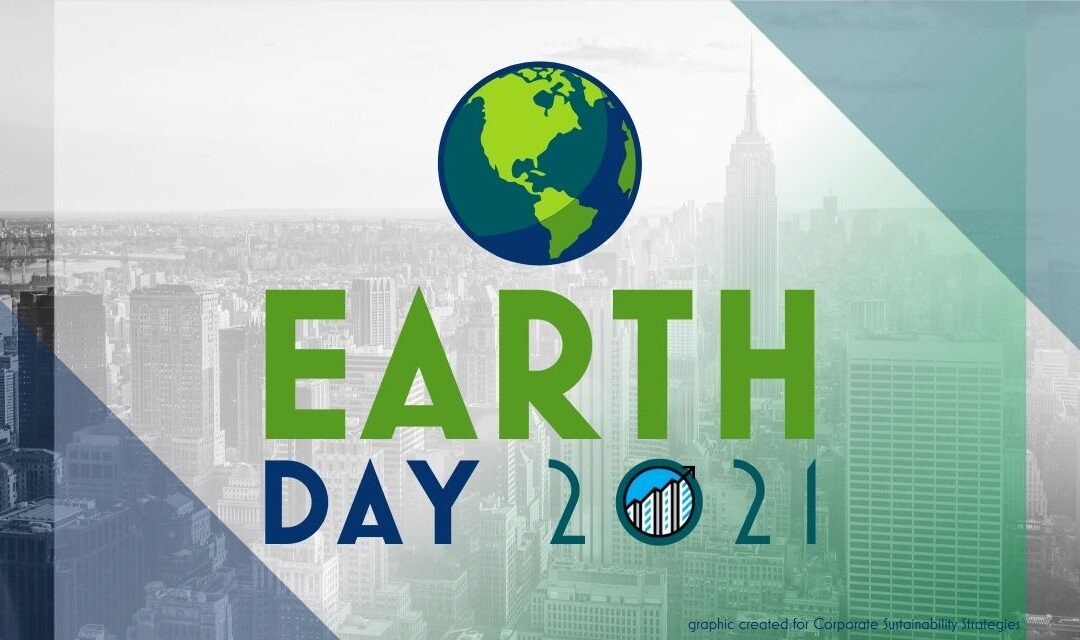
Apr 20, 2021 | Articles, Homepage
Today, 1 billion individuals in over 190 countries mobilize for action every Earth Day. World climate leaders, grassroots activists, nonprofit innovators, thought leaders, industry leaders, artists, musicians, influencers, and leaders of tomorrow are all involved.
On April 22, 2021, EarthDay.org is hosting its Earth Day Live digital event. The global show begins at 12 PM Eastern Time.
Restore Our Earth™ is Earth Day’s 2021 theme, which examines natural processes, emerging green technologies, and innovative thinking that can restore the world’s ecosystems.
Topics include:
- Climate and environmental literacy
- Climate restoration technologies
- Reforestation efforts
- Regenerative agriculture
- Equity and environmental justice
- Citizen science
- Cleanups, and more.
In celebration of Earth Day’s 51st Anniversary, here are 51 actions and tips to make a difference, every day of the year.
For more information on Earth Day visit www.earthday.org.

Apr 7, 2021 | Articles, Homepage
By Brenna Walraven, President & CEO, Corporate Sustainability Strategies
Article published in Realcomm Weekly Briefing.
Leading companies that are seizing opportunities offered by zero-emissions mandates to generate business opportunities and value for their stakeholders was the focus of the most recent Realcomm webinar highlighting pathways to improving environmental, social, and governance (ESG) performance. In Improving ESG Performance and Part II: Achieving Carbon Neutrality in the Built Environment, industry leaders illustrated examples of how to use a planning process and smart building technologies to achieve energy savings and realize the value creation potential of ESG.
Commercial buildings contribute nearly 20 percent of U.S. greenhouse gas (GHG) emissions, so the building sector must be part of the solution to address climate change. For owners and operators, addressing the energy and carbon profile of their buildings is no longer a “nice to have” but a core business requirement. This evolution is driven by growing investor pressure, tenant preferences, and government regulation.
The Biden-Harris administration has signaled that agencies will view regulatory action and directing funding with a climate lens. For example, in March of 2021 the Securities & Exchange Commission (SEC) announced a task force focused on climate and ESG issues within the Division of Enforcement. State and local policy has been aggressive on energy and climate regulation. In total, 24 states and the District of Columbia have established economy wide GHG emissions targets, many of which align with a 50 percent reduction by 2030 and net zero (or nearly) by 2050. Jurisdictions are looking to frameworks like New York City’s Local Law 97 and the DC Clean Energy Omnibus Act, which build on mandatory benchmarking and disclosure of energy and/or emissions to set binding declining emissions caps for existing buildings.
Investors are also driving the imperative to address climate impact. The CEO of BlackRock, Larry Fink said, “Climate risk is investment risk” and noted that a fundamental reallocation of capital to sustainable investments has begun. Investors are no longer asking “Do you have an ESG program?” but saying, “To be investible, companies have to be taking action and transparently demonstrating performance.”
Increasingly, tenants are making net-zero commitments and requiring that their leased space meets these goals. Almost a quarter of global Fortune 500 companies committed to be carbon neutral by 2030 and are looking for buildings that align with these commitments, with transparent reporting that can be incorporated into their corporate climate reporting.
Leaders who have begun their progress toward carbon neutrality discussed their process in the Realcomm webinar Achieving Carbon Neutrality in the Built Environment.
Ryan Tinus of Hudson Pacific Properties shared his company’s Better Blueprint focused on achieving net zero carbon across all operations using a sustainable, healthy, and equitable approach. Sara Neff with Kilroy Realty shared CEO John Kilroy’s goal to be a leader in ESG and to help move the market towards carbon neutrality by announcing a commitment to carbon-neutral operations in 2018.
These successful leaders are following a best-practice process. The critical first step is an investigation of the portfolio to determine the approach, end goal, and timeline to reach climate neutrality. This includes determining emissions scope(s) and reporting boundaries, assessing the regulatory landscape and carbon intensity of the portfolio’s electric grid(s), and understanding incentives available for energy efficiency, electrification or onsite renewables, all of which contribute to a comprehensive carbon management strategy, appropriate end goal and milestones along the way.
The next step is developing a greenhouse gas/carbon inventory that sets a baseline against which to measure (and show progress), helps set realistic, achievable targets, and demonstrates ongoing credibility through tracking and reporting. The most straightforward framework is the GHG Protocol’s Corporate Accounting and Reporting Standard. The Science-Based Target Initiative works with companies to set carbon reduction targets that are aligned with the targets defined in the Paris Climate Accord.
After a GHG emissions inventory has been developed, opportunities to evaluate ways to reduce emissions can be assessed, prioritizing efficient operations and appropriate updating of inefficient systems and equipment as well as using innovations such as those described by Jon Schoenfeld with Buildings IoT and process approaches like those described by Chris Cayten, CodeGreen Solutions on the Realcomm webinar. These best practices coalesce around reducing emissions as the primary focus, maximizing the use of on- and off-site renewable energy sources, and then purchasing “offsets” for the remainder of the emissions as the “last step.”
Another important aspect of a carbon management plan is consistent measurement and tracking of key metrics. This is fundamental to reporting progress toward goals and assessing and adjusting strategy to stay on track. Staying abreast of developments in the investment community as well as in the regulatory space will inform the choice of platform(s), including the need for tools that comport with industry-specific standards, such as those developed by the Sustainability Accounting Standards Board (SASB) or the Task Force on Climate-related Financial Disclosures (TCFD). A best practice example of ongoing internal and external reporting and data management is described by Tanya March with Envizi on the Realcomm Achieving Carbon Neutrality webinar.
Next comes the fun part: announcing a commitment! Every week a CEO makes headlines for a bold climate commitment. At the same time, there is growing scrutiny about some of these commitments. “Long-range” goals that once seemed very far off are no longer so, and as 2030 draws nearer, the pressure to transparently demonstrate real progress will grow. Companies that invest in the foundational work of analyzing the opportunity, developing an accurate inventory, and setting realistic, achievable targets will protect themselves against reputational risk and potential negative financial impacts.
Executing on a climate neutrality commitment requires a combination of executing energy efficiency retrofits, incorporating renewable generation, considering opportunities such as end-use electrification, and investing in various offset schemes. It requires reassessing strategy as new technologies come online, grid energy decarbonizes, carbon offset prices change, and new value streams and business models emerge. A successful carbon management strategy will set a realistic and achievable “North Star” goal, utilize consistent and rigorous tracking and measurement, and follow the plan-do-check-act framework to stay on track.
Gone are the days when a plaque in the lobby was enough to attract tenants and investors. We are entering an era of rigorous and credible climate target-setting, tracking, and achievement. Companies that take climate risk seriously, and develop, track, and report climate neutrality goals will be at an advantage.

Nov 19, 2020 | Articles, Homepage
Get recognized for your smart leasing efforts and showcase your commitment to sustainability.
Building decarbonization is inevitable, and that makes green leasing more important than ever.
Green leases are a tool for improving occupant health and wellness, operating efficient and sustainable buildings, saving money, and much more. If you’re a landlord or tenant who is actively leveraging your leases to reach your ESG goals, don’t miss your chance for Green Lease Leader recognition.
Green Lease Leaders is the only national green leasing recognition program. Created by the Department of Energy’s (DOE) Better Building Alliance and the Institute for Market Transformation (IMT), it celebrates and validates leading-edge landlords, tenants, real estate teams, and governments in the commercial office, retail, and industrial sectors that are driving higher performance in leased buildings by addressing energy efficiency and sustainability through smart and green lease clauses and corporate guidelines.
Read more about the program, apply for recognition, or quickly see if you qualify by visiting greenleaseleaders.com.
About 2020 Green Lease Leaders
2020 Green Lease Leaders represented portfolios totaling more than 1 billion square feet and comprised a diverse range of buildings from large and small commercial offices to industrial buildings to data centers. Altogether, Green Lease Leaders manage nearly 3 billion square feet of commercial and government space, representing a huge potential for growth in green leases.
greenleaseleaders.com








